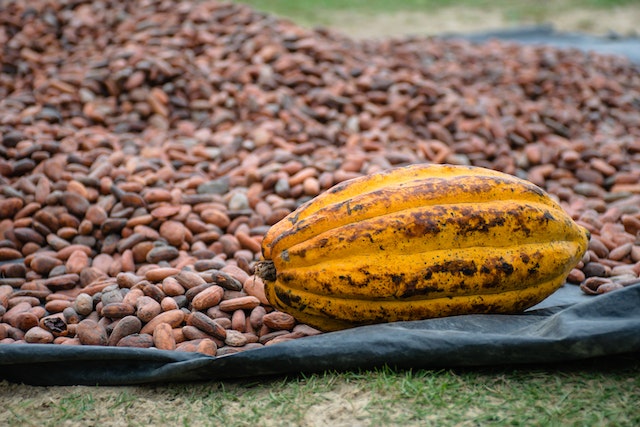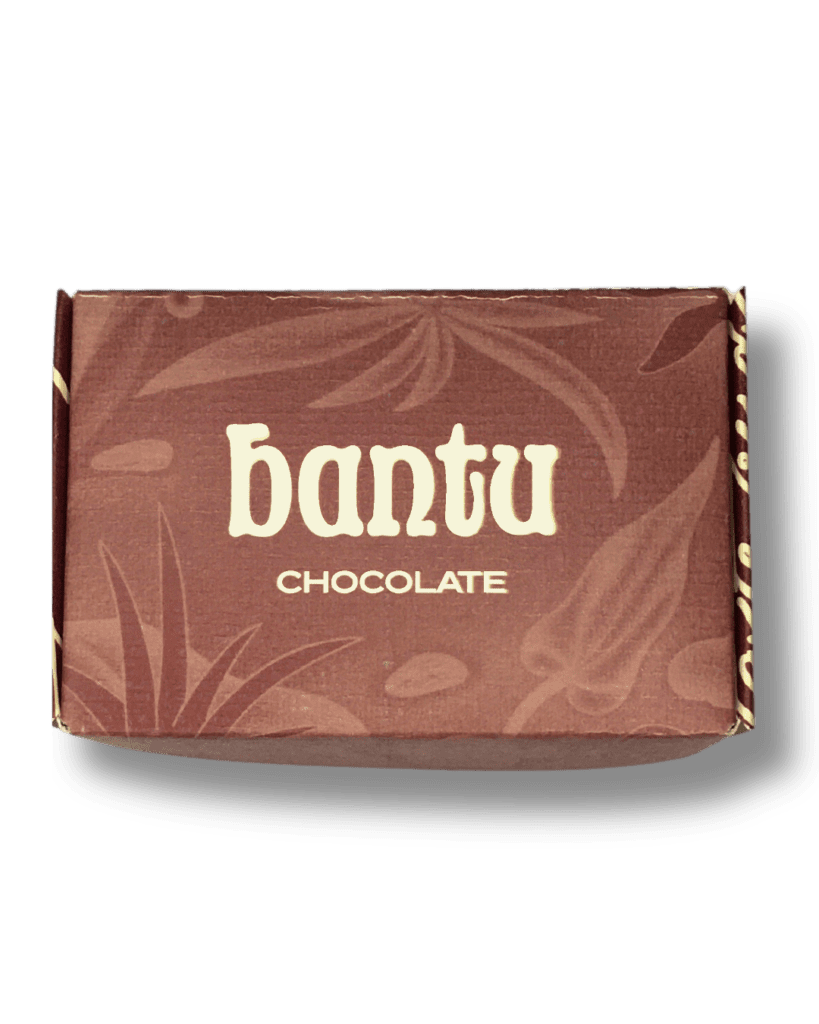
Corporate Chocolate Gifting Ideas to Appreciate Employees and Delight Clients
December 14, 2024Chocolate Extinction
Fact vs. Fiction, What Consumers Can Do
Is the world really running out of chocolate?
Not really.
Currently the global demand for cocoa far exceeds its supply, but that does not in any way prove that chocolate will disappear in a few decades.
As USA Today reported a day later, the 2017 Business Insider article that blew up the viral wakeup call about cocoa extinction contained inaccurate information. While it is true that the cocoa industry faces challenges, the prediction that chocolate will be extinct by 2050 is a claim the UC Berkeley researchers referenced in the Business Insider article later denied.
However, concerns about cocoa supply are serious enough for consumers to care about the underlying causes and the future of chocolate.
The State of Cocoa Production
The current demand for cocoa exceeds supply, with the International Cocoa Organization having forecasted a deficit of 462,000 tonnes for the 2023/24 season just ended in September. Cocoa prices have declined recently but still remain high due to persistent supply constraints from bad weather conditions, aged trees, pests, and diseases.
READ ALSO: Cocoa Shortage and Rising Prices in 2024
But there’s something more that’s not being talked much about in the narrative around cocoa extinction. If truly cocoa is going extinct, is adverse weather the only culprit?
Farmer Poverty, the Underlying Threat to Cocoa Production
While adverse weather conditions get more media coverage as the immediate cause of a potential future without cocoa and chocolate, the threats to cocoa production are more complex than that.
Farmer poverty continues to be a major issue despite various initiatives and schemes by producer governments, organizations, cooperatives, and individual brands. In the Ivory Coast, for instance, a mere 13% of cocoa farming households earn a living income, according to the Rainforest Alliance. The situation is even worse in Ghana where only 10% of farmers achieve a living income, as reported by Oxfam America.
READ ALSO: Beyond Fair Trade – How Our Tree to Bar Model Exceeds Industry Expectations
Several factors contribute to this persistent poor farmer income.
- Low farmgate prices
Farmgate prices are the prices farmers receive for their cocoa. In West Africa, these do not often reflect the cost of production or the farmers’ cost of living. This means farmers’ expenditures usually exceed income, making it impossible for farmers to save or reinvest.
- Farmers lack the funds to invest in their farms
Farmers need to replace aging trees, hire labour, and purchase essential inputs like fertilizers. This is particularly challenging for female-led farming households and older farmers. The International Cocoa Initiative found that in Ghana only 36% of farmers could afford farming inputs in nearly 30 cocoa-farming communities.
- Small farm sizes and low yields
Over 70% of cocoa global supply comes from farmers in West Africa, majority of whom are smallholder households with farm sizes that average between 3.65 and 4.17 hectares. Their low yields (400 to 500 kgs per hectare) don’t meet the expected 800 kilograms per hectare for Fair Trade’s Living Income Reference Price (LIRP) to work.
- Crop diseases
Diseases like black pod rot, capsid, and cocoa swollen shoot virus disease (CSSVD) severely lower yields, with CSSVD alone causing 15-50% yield loss. With already low incomes, farmers are unable to effectively fight back these attacks.
- Industry-wide inability to tackle farmer poverty
There’s no consensus on methods to calculate a living income for cocoa farmers. Pricing interventions, such as premiums on top of farmgate prices, have been implemented, but these measures are not enough to bridge the living income gap.
Fake Chocolate is not the Solution
Since cocoa prices soared, chocolate lovers have paid for it through skyrocketed chocolate prices.
Chocolate makers have had to face the temptation to shrink package sizes for same price or increase prices. Or even more seriously, replace cocoa products with ingredients that look like cocoa, smell like cocoa, but only they’re not cocoa.
As we’ve contended before, fake chocolate is neither the solution to the current cocoa supply limitations nor the future of cocoa.
READ ALSO: Fake Chocolate vs. Real Chocolate: How to Tell the Difference
For true chocoholics, real chocolate is irreplaceable. And for every challenge to sustainable cocoa farming, there’s a solution that doesn’t have to cut out cocoa from recipes.
Fake chocolate does not only deprive consumers of the real stuff but also seeks to cut off the livelihoods of millions of cocoa farmers. That’s not socially ethical, even if fake chocolate makers claim environmental considerations. Ethical should mean being fair to everyone in the value chain.
Case Studies: What’s being done to prevent cocoa extinction
With no industry-wide consensus on methods to ensure sustainability, individual brands are taking their own initiatives at tackling common issues.
- Small Brands with Shorter Value Chains
At Bantu Chocolate, we decided to farm cacao and make chocolate with beans from our farm so we could control the value chain. Regenerative agriculture, beyond-fairtrade wages, and direct community involvement are the ways we ensure our supply chain stays sustainable and ethical.
For us, cocoa and chocolate are not going extinct anytime soon.
READ ALSO: Beyond Fair Trade – How Our Tree to Bar Model Exceeds Industry Expectations
But not every chocolate maker can adopt our farm-to-table model. Still, other models, if genuinely carried out with farmers and farm worker welfare and environmental health at the fore, still go a long way in making a big difference in tackling chronic underpayment of cocoa producers.
SEE ALSO: Ethical Artisan Chocolate Brands in the UK Worth Buying From
- Open Chains and Direct Trade
Open chains and direct trade ensure premiums go directly to farmers as income instead of through cooperatives.
- Other initiatives
Several organizations have launched initiatives to promote sustainable cocoa production. Some focus in developing disease-resistant cacao species and others work on improving farmer wellbeing.
The Global Sustainable Cocoa Initiative, a collaborative effort between the Food and Agriculture Organization and the European Union, supports the long-term economic, social, and environmental sustainability of cocoa value chains in Ivory Coast, Ghana, and Cameroon. Launched in response to the 2019 Living Income Differential introduced by the government of Ivory Coast, this initiative addresses low farmer incomes, deforestation, and child labour.
The PROMIRE project, a joint initiative of the FAO and the Green Climate Fund, promotes agroforestry practices among cocoa farmers in Ivory Coast. By shifting from traditional full-sun cocoa farming to agroforestry, farmers increase their yields and incomes. Agroforestry integrates cocoa trees into a diverse forest ecosystem, which provides shade, improves soil health, and enhances biodiversity. Cocoa trees require specific conditions to thrive such as shaded environments with adequate moisture, uniform temperatures, and nutrient-rich soil.
The Role of Consumers in Preventing a Potential Chocolate Extinction
Consumers have the power to demand a more sustainable and equitable chocolate industry.
Here’s how you can do it:
- Support transparent, ethical brands
Choose chocolate brands that prioritize transparency about their cocoa sourcing practices. Look for companies that disclose information about their supply chains. Ensure that cocoa beans are sourced from farmers who receive fair prices and work in safe conditions.
- Hold brands accountable
Demand sustainability and accountability from chocolate companies. Encourage brands to adopt farmer friendly practices, such as higher prices for cocoa beans. Also, advocate for openness about traceability that can allow consumers to know the origin of cocoa beans.
- Raise awareness
Educate your social networks about the challenges faced by cocoa farmers like low incomes. This way, you can inspire others to make informed purchasing decisions and promote positive change within the chocolate industry.
The Future of Chocolate is Promising
According to a 2025 Farmforce forecast, Ghanaian cocoa farmers are expecting a rebound in the 2024/2025 farming season, driven by improved weather conditions and enhanced disease management strategies. Ivory Coast farmers are also expecting a strong recovery. This uptick in production offers hope for a brighter future for cocoa farmers and the industry as a whole.
However, the deep-seated challenges around cocoa production will take time to effectively tackle. That calls for all hands on deck from all stakeholders, including consumers.
Key takeaways
Chocolate extinction is a wake up call sounded back in 2017 by Business Insider and amplified by other news outlets, although researchers said chocolate extinction is unlikely.
However, the industry faces significant threats to cocoa production. These include farmer poverty, low farmgate prices, adverse weather conditions and crop diseases. To prevent a potential chocolate shortage, it’s crucial to address these underlying issues.
Initiatives like regenerative agriculture, disease-resistant cacao species, and agroforestry practices can improve farmer wellbeing and promote sustainable cocoa production.
Consumers play a vital role in driving change by supporting transparent, ethical brands and advocating for accountability.
Answers to Common Questions
Why is cocoa becoming extinct?
Cocoa is not becoming extinct, but its production is under threat due to factors like poor farmer incomes, climate change, aging trees, deforestation, pests, and diseases.
Will chocolate go extinct?
No. Chocolate is unlikely to go extinct, as governments, organizations, and brands are working towards sustainability. The world is not running out of chocolate, but production may decline if sustainability issues are not addressed.
What is being done to prevent the extinction of cocoa?
Efforts to improve cocoa supply include sustainable farming practices, reforestation, developing disease-resistant breeds, and supporting small-scale farmers.
What conditions are needed to grow cocoa?
Cocoa needs a warm, humid climate with average temperatures between 18°C and 32°C, well-distributed rainfall, and shaded environments with nutrient-rich soil.
Is there a shortage of cocoa in 2024?
Yes. There’s a global cocoa shortage in 2024 because of declines in yields in West Africa where over 70% of global supply comes. But the outlook for 2025 is promising.
Will chocolate survive climate change?
Cocoa farming needs to adapt to climate change through sustainable practices, climate-resilient varieties, and innovative farming techniques to ensure its long-term survival.
References
https://www.foodnavigator.com/Article/2024/07/17/Living-income-in-cocoa/
https://www.greenclimate.fund/project/sap015
Corporate Chocolate Gifting Ideas to Appreciate Employees and Delight Clients
Corporate Chocolate GiftingHow to Appreciate Employees & Delight Clients Share On Facebook Twitter Email When it comes to corporate gifting, a one-gift-fits-all approach just doesn't cut […]
Cacao Supper Club at Home: Guide to Tasting Chocolate, Cacao Tea, and Pulp Juice
Cacao Supper Club at HomeGuide to Tasting Chocolate, Cacao Tea, and Pulp Juice Share On Facebook Twitter Email Imagine gathering around the table with a few […]
The Bitter Side of Dark Chocolate: Why Some Love It and Some Don’t
The demand for dark chocolate continues to grow, due partly to the growing awareness of its health benefits. But while some consumers rave and swear by its rich, velvety goodness, others scrunch up their faces.







